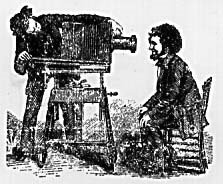Summary:The novels cover two story arks:It details Art Spiegelman recording his father’s, Vladek’s, account of the Holocaust.This task spans over quite some time and during this the novel paints a picture of Vladek what has become. He is in poor health, his behavior is erratic, compulsive, and has an unhealthy relationship is his second-wife, Mala.He novel ends with Vladek’s death.As his father recounts his life leading up to and during the Holocaust, the book retreats from the present and becomes a narrative told from Vladek’s perspective.He married Art’s mother, Anja, who was a member of a prosperous family in Poland.When the Nazis came to power things were difficult for them and all other Jewish families.Their condition got worst and worst and their attempts to survive were made all the more difficult because of rampant deception.Eventually they were split up and sent to Auschwitz.With cleverness, conservation, and a whole lot of luck, the two survived the war and moved to America where Art was born.After a few years Anja committed suicide.
Main issues, themes, ideas:
Racism/Diaspora
Value
Father-son relationship
Power
Collections
Self-reliance/Trust
Survival
Visual Style: Art Spiegelmans is pretty consistent with his visual style.There is little detail in most of his drawings and they can seem to take a backseat to the novel’s text.There are occasions that the visual style dramatically changes which can be quite jarring and punctuating.These sweeping alterations create a foreign atmosphere and give insight to the different aspects of the characters and author (who is a character in the book).Throughout the novel Art represents groups with certain animals.The Jews are mice, the Germans cats, the Polish pigs, the American dogs.The symbolism is apparent and its consistent use begins to meld the relationships between these groups with our perception of the relationships between the animals they are being represented as.
The novel jumps between the present day and WWII, but as Art becomes engrossed in his father’s tale of the Holocaust, aspects of the story seep into the drawing of the present day.For example, while conducting an interview during a drive, the silhouette of lynched Jews can be seen in the forest beyond the road they’re driving on.The bridging of these two worlds is a powerful visual technique that demonstrates how Art has been affected by constructing the novel.
announcements
This blog was created by and for students in an Introduction to Cultural Studies class at the University of Washington. Through an investigation of urban experience and representation--in theory, in graphic novels and in our own "readings" of Seattle's University District--we considered the formation and history of cultural studies as an (anti)discipline, with a special emphasis on the questions, "What does cultural studies do, and how do you do cultural studies?"
If you'd like to know more about the class, the blog or our U-District artifact project, please contact Gabrielle Dean: gnodean@u.washington.edu.
If you'd like to know more about the class, the blog or our U-District artifact project, please contact Gabrielle Dean: gnodean@u.washington.edu.
Subscribe to:
Post Comments (Atom)
blog archive
-
▼
2008
(92)
-
▼
May
(26)
- Seattle U District: City Artifacts Map
- City Artifacts: What and Where?
- Researching History and its Representations...
- Palestine
- Persepolis 1 & 2
- Shutterbug Follies
- A Scanner Darkly
- Maus I & II
- A Scanner Darkly
- Maus I & II
- Shutterbug Follies
- Persepolis 1 and 2
- Postcards: True Stories that Never Happened
- Maus I & II
- Postcards: True Stories that Never Happened
- Persepolis 1 & 2
- Mail Order Bride
- Mail Order Bride: Mark Kalesniko
- Persepolis 1 & 2
- Shutterbug Follies
- Maus I and II
- Palestine
- Postcards: True Stories That Never Happened
- PALESTINE
- Postcards: True Stores That Never Happened
- Shutterbug Follies
-
▼
May
(26)

2 comments:
Your last description of Art Speigalman's visual style is intriguing. I think he uses such allusions to the Holocaust in the present-day storyline not only to demonstrate how he has been affected by the construction of this novel, but also how these people, these Jews who were lynched, gassed, etc., must not be forgotten and putting his father's story into a graphic novel is one of the ways to remember them.
I agree with tiffany l. Great work on pointing out that panel with the lynched Jews -- I forgot about it. Also, really solid plot summary and list of themes -- self reliance & trust, those are big ones.
Post a Comment